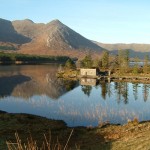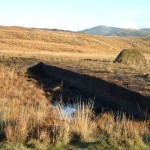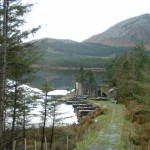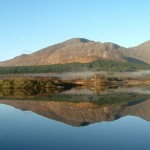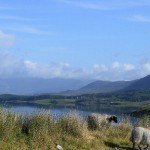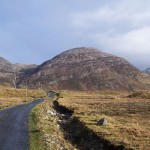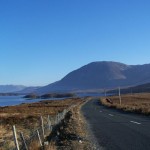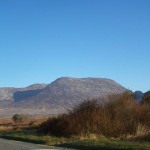STAY
Lough Inagh Lodge 4* Hotel
Lough Inagh Ranch Bed & Breakfast
FOOD (Restaurants, Cafes, Bars)
Lough Inagh Lodge 4* Hotel
ACTIVITY
Deora Dé 5 Rhythms® Dance Practice
Get your camera out as you are about to embark on one of the most scenic drives in the world! There is a photo opportunity at every turn as the Inagh Valley road wends its way through the majestic heather covered mountains and around the picturesque lakes. The vista is ever-changing from day to day as the slightest change in the day is reflected in the lakes and mountains.
There are numerous lovely walks of varying lengths and it’s a wonderful spot for fishing. If you feel like trying something different there is a wonderful dance movement workshop which takes place at various venues in the area. This is a place to relax and soak up nature so why not stop for lunch in The Inagh Valley Lodge or perhaps make it Dinner and drinks before retiring to one of the nearby bed & breakfasts or self-catering houses or stay at the Lodge.
History
The Inagh Valley would have been covered by deciduous and pine forest after the Ice Age. During the Neolithic Age (2,500BC) the first farmers began to clear land so they could build their farms. They cleared the thinner, upland areas and used them as pasture and the hillsides were used for cultivation. Devoid of trees the soils nutrients would have been washed away by rain and this caused the soil to become acidic (leached). The land lower down became waterlogged as a result. By the end of the Bronze Age (500BC) the farmers were forced to clear the lower lands as the uplands were no longer usable. Debris from plants did not decompose in the leached soils and a layer of peat began to build up. Any remaining trees were chocked by the peat, thus forming a ‘Blanket Bog’. A week of turf cutting would provide enough fuel for a family for one year.
A bank is opened up on the bog, and using the sleán, sods are cut and landed on the top of the bog. The wet sods are spread out using a turf-fork or pike. After one week the sods are moved to dry ground and built into small stacks, by standing the sods up on their ends against each other. A sod is placed on top to stabilise the stack. This is called footing the turf. The stacks are left to dry throughout the summer months in the sun and wind. When the sods are dry they are transported to the home and built into a large pile. From here they are used in the home. The Western side of the valley is flanked by the majestic Twelve Bens mountains, the lake itself is widely known for it fishing and businesses along this route would provide the opportunity to experience this. Sheep roam the roads quite freely here so do take care when driving as they can be slow to change their direction…they are well adjusted to the more peaceful pace of life here in the Inagh Valley!

